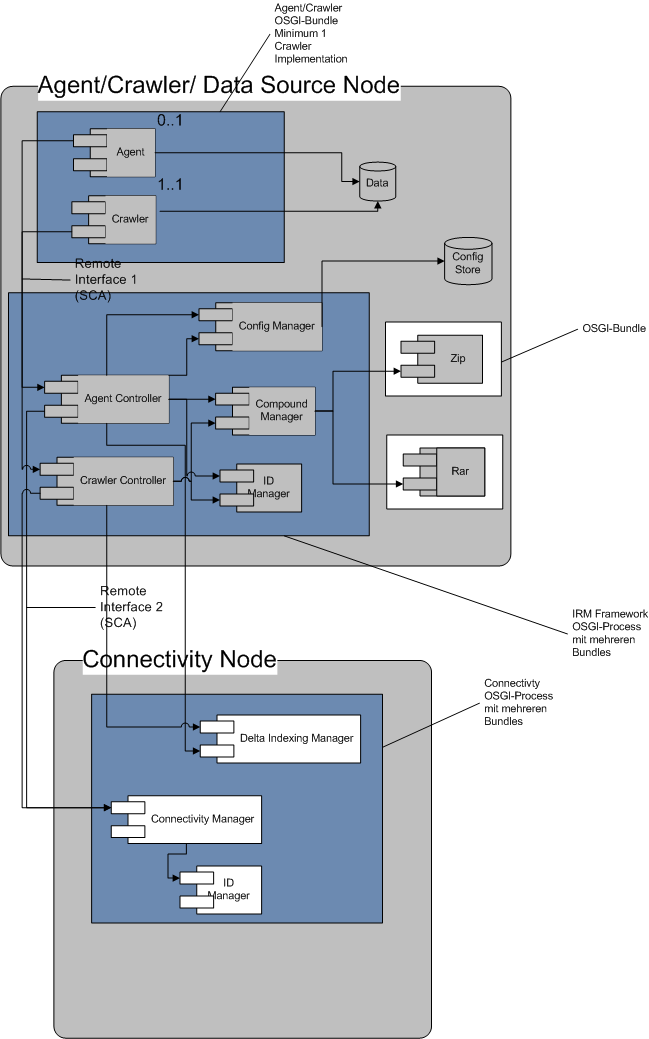Notice: This Wiki is now read only and edits are no longer possible. Please see: https://gitlab.eclipse.org/eclipsefdn/helpdesk/-/wikis/Wiki-shutdown-plan for the plan.
SMILA/Project Concepts/Deployment&Implementation Concept for the IRM Framework
Description
This pages is used only for Discussion of the Deployment / Implementation of the whole IRM Framework concept. Discussion should be focused at the problems: - distributed application - used technologies (where should be used which technology and why )
This page describes the deployment of the IRM Framework. Therefore it discusses and shows how the Framework components are bundled and which are running at the same host.
Technical proposal
The following figure describes my opinion of the adaption of the framework to deployment strategies and use of technologies.
The IRM Concept can be installed onto 2 to 3 three Nodes.
The Main modules are:
Connectivity
IRM Framework
IRM Implementation (Agent/Crawler)
The Interfaces between this Parts uses SCA for the Communcation, therefore the Modules can be installed all at the same Host or onto three different Nodes. The above figure shows the suggest installation. The Connectivity is installed somewhere else while the IRM is installed with the IRM Framework onto the same host.
Each of this Main modules consist of same Bundles (seen in the figure). Each of the Components can be developed in a OSGI-Bundle (They can be simpler reused (see ID-Manager) and exchanged. The Bundles defines Extension Points (and sometimes probalby OSGI-Services) to communicate with each other. Both techniques allow to find installed Bundles. This mechanism is used e.g. with Compound Handlers. Compound Handlers have to be installed locally in the IRM Framework (deployed) and the IRM-Framework looks for them.\\
IRM
The IRM should contain at minimum 1 Crawler and CrawlerFactory implementation. Furthermore an Agent Implementation is allowed
ToDo: Can SCA "find/lookup" installed composites (or something like agent/crawlers){warning}

